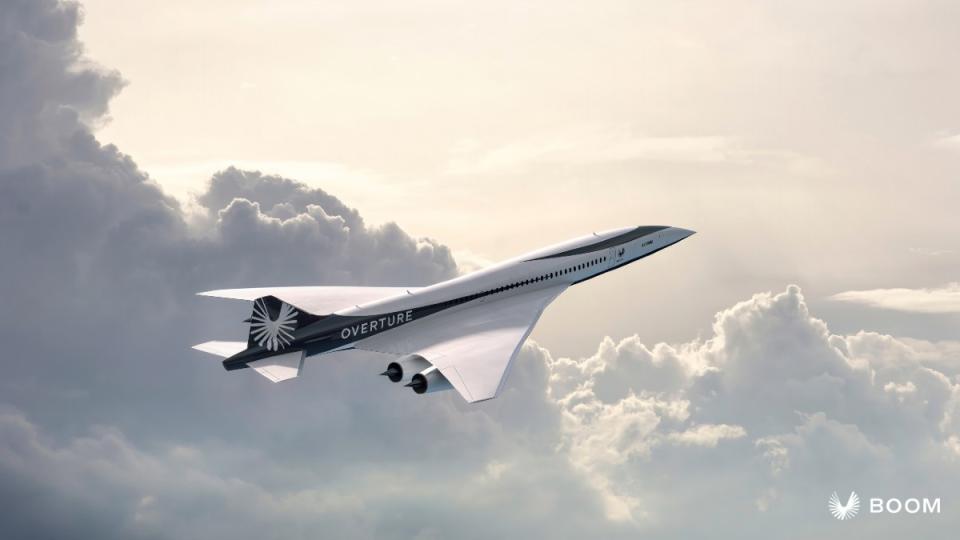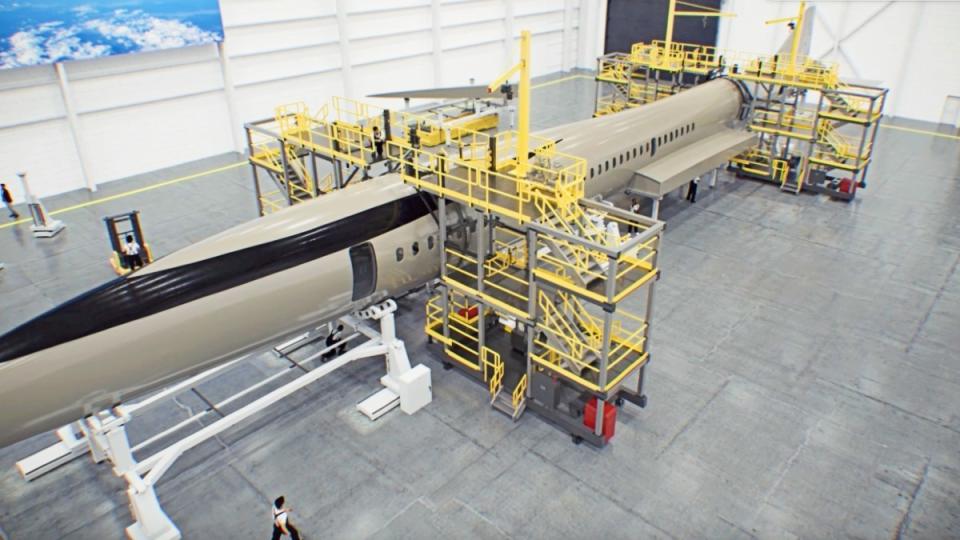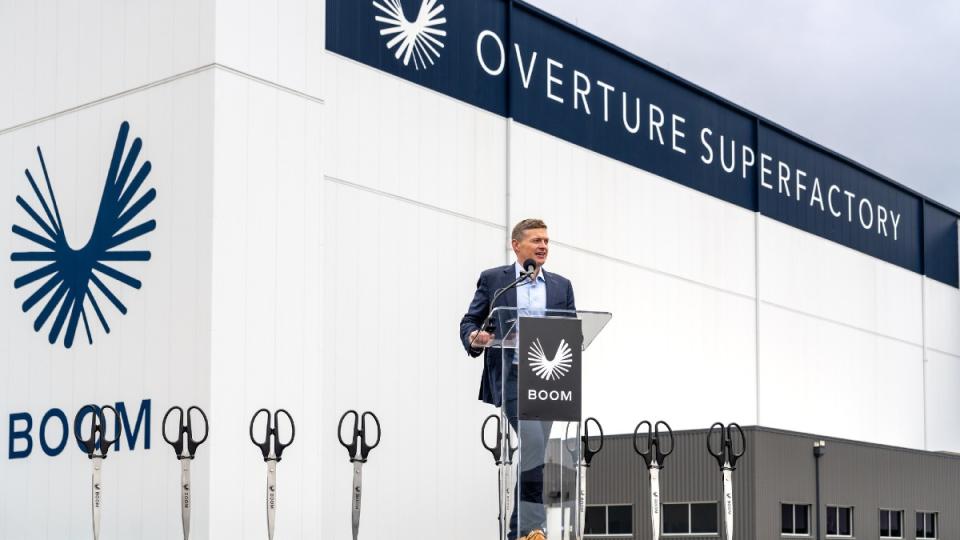Boom Just Opened a North Carolina Factory for Its Supersonic Jets

Boom Supersonic yesterday held a ribbon-cutting ceremony at its new Overture Superfactory, announcing its completion. The Denver-based aerospace firm broke ground about 17 months ago.
The 179,000 square-foot facility is located in Greensboro, North Carolina, at the Piedmont Triad International Airport. Blake Scholl, founder and CEO of Boom Supersonic, said the country’s first supersonic Superfactory “represents a major milestone toward ensuring the United States’s continued leadership in aerospace manufacturing.”
More from Robb Report
These Next-Gen Supersonic Jets Want to Replace the Concorde. Will They Ever Take Off?
How NASA's New Supersonic Jet Replaced the Boom With a Quiet Thud
Watch: This Bonkers Supersonic Drone Almost Hit the Speed of Sound on a Test Flight
To the assembled crowd, the Boom chief executive presented his $200 million supersonic Overture jet as an alternative to Boeing and Airbus, the world’s largest aircraft manufacturers. “It’s never been more obvious that the world is not well served by the duopoly that we have in commercial aviation manufacturing,” Scholl told the crowd, according to the News Observer. “Our customers, like United, have been very vocal that they are looking for an alternative to brand A and brand B.”

Boom has made Overture sales with non-refundable deposits to United, American Airlines, and Japan Air Lines.
Yesterday’s event was attended by North Carolina Governor Roy Cooper and Phil Berger, North Carolina Senate president pro tempore. Boom’s arrival to North Carolina came with an agreement by the state and Guilford County to offer more than $121 million in incentives if it hires at least at least 1,750 people and invests $500 million in the Greensboro site. The Tar Heel State also allocated $56.75 million to construct two aircraft hangars at the site. Under the agreement, Boom must reach an initial hiring threshold in 2026.
The North Carolina governor cited statistics that a full Boom Manufacturing program will grow the state’s economy by at least $32.3 billion over 20 years, with the creation of more than 2,400 jobs.

Despite yesterday’s fanfare, it’s not clear where and when all this growth will come from.
Overture, which will carry between 65 and 80 passengers, remains a concept without a working engine. Its technology demonstrator, the XB-1, did its first flight in the California desert in March, but has yet to make a supersonic flight. The company says it expects the Overture to be certified and in commercial operation by 2029.
But many aviation experts remain skeptical. Brian Foley, an analyst who did market research on supersonic jets when he was employed at Dassault Falcon, believes the potential market won’t be large enough to sustain one supersonic aircraft manufacturer, or multiples, such as Spike and Exosonic, that have also announced their intentions to build an aircraft. He forecasts a market of about 300 jets for private owners, or about 30 planes a year for 10 years: “Is that even enough for an engine manufacturer to participate?” Foley recently told Robb Report.

Apparently not. When the then commercial supersonic leader, Aerion, abruptly shut down in 2021, it was after spending 20 years and billions on developing the AS2 supersonic business jet. The company had also broken ground for a new campus on Florida’s Space Coast several months earlier but then closed, citing a lack of interest by potential investors for the future of supersonic. When it shut down, so did three years of development with GE Aerospace on an Affinity supersonic engine for the aircraft.
GE, along with major engine builders Pratt & Whitney, Rolls-Royce, Honeywell Aerospace, and Safran, passed on developing an engine for Boom, according to AIN. Boom then formed an alliance that included Florida Turbine Technologies, GE Additive, and StandardAero to invent a propulsion solution, an engine called the Symphony.
“Designing an engine is no easy task, especially from scratch, and it’s potentially a multibillion-dollar exercise beyond designing the plane,” Foley told Robb Report a year ago.

A Boom spokesperson did not reply to a question about when Overture production will start in North Carolina but said Greensboro employees would start work immediately. The company said in a release that it will work with tooling supplier Advanced Integration Technology (AIT) to begin procuring and installing tooling in the factory, starting with a test-cell unit, over the next 12 months.
The XB-1 could make a supersonic test flight within a year, and the company has received G1 certification from the FAA. “It’s a long list of boxes we have to check, as it should be,” Scholl recently told Robb Report about gaining certification for its supersonic jets. “But we’re locked in on the needs and all we have to do is meet them.”
Scholl says supersonic development matches other fields of technology. “Tech advances in S-curves. Products go through periods of slow development, then rapid improvement, then level off again to incremental gains,” he says, likening the Overture to the original iPhone. “In those early days, it made huge leaps every year. That’s where we are with supersonic.”
Best of Robb Report
Sign up for Robb Report's Newsletter. For the latest news, follow us on Facebook, Twitter, and Instagram.

 Yahoo Finance
Yahoo Finance 